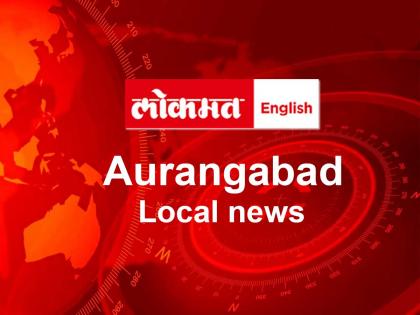From ticket collector to district collector
By Lokmat English Desk | Published: April 2, 2022 06:40 PM2022-04-02T18:40:02+5:302022-04-02T18:40:02+5:30
Yogesh Gole Aurangabad, April 2: A young ticket collector was on duty on Ajanta Express at night when the ...

From ticket collector to district collector
Yogesh Gole
Aurangabad, April 2: A young ticket collector was on duty on Ajanta Express at night when the drunk activists of an MP, who was travelling in the train, kicked up a row over seats. It was 12 midnight. Shouting at the top of their voice, they were disturbing other passengers. The humble TC tried to calm them down but to no avail. Finally, he warned them that he would have to make them leave the train if they did not keep quiet. “Who are you? You are a ticket collector not district collector,’’ they retorted. Their remark left a huge impact on his mind. Unaware of what district collector is and what one had to do to be one, he researched, began preparations in 2007 and in the second attempt cleared the union Public Service Commission examination in 2009, securing all India 97th rank. He was 24 then. Five years later, he headed a district as a collector. Read the unbelievable story of grit and struggle by G Sreekanth, Joint Commissioner, State Goods and Services Tax, Aurangabad.
Q: How did you turn to civil services examination? Did you always aspire to be a bureaucrat?
A: IAS was never a dream for me. I come from a very small village Jawalgera in Raichur district. My parents used to stay in a farm 10 kms from the village. As they could not afford to send me to school to the village, I stayed in a hostel in Andhra Pradesh from standards first to 10th after which I opted for the two-year job linked vocational Course in Railway Commercial. A half of the course was in the classroom and the other half was actually doing different passengers related jobs in railways. After training in Hyderabad, I was posted in Purna in Parbhani district in Nanded division. My journey started in Maharashtra on October 7, 2002. While working as TC, I completed my graduation (B Com) via distance learning facility of Osmania University and also M Com first year. During nine years in the railway department, I had myriad experiences, saw people struggle. I also noticed problems Jawalgera villagers faced. I did not have any solution to those problems but after entering IAS, I thought I could do something.
Q: About Aurangabad GST joint commissionerate.
A: SGST, Aurangabad comprising Aurangabad, Beed and Jalna districts has 54,000 registered traders and witnessed 27 per cent growth in revenue this year. We were the first to set up flying squads in Maharashtra and regularly conducted e-way bill checks. GST has resulted in robust and interlinked system. It’s based on mutual trust among traders which is benefitting government. If I sell you raw material, unless you pay tax, I will not get input tax credit. So, traders are themselves making others to pay. In Aurangabad, more industries are coming due to Shendra DMIC so GST collection will further go up.
Q: Which innovative experiment during your career gave you satisfaction?
A: I launched a 10-point programme Mission Dilasa to reduce farmers suicides. Attention was given to psychological aspect too. The Bombay high court bench also praised the initiative. In a suo moto petition, the HC called me for personal presentation. Akola district has 700 villages and I visited 550 as part of the mission. The first thing we did in a village is to administer pledge to all that it will be a suicide-free village and villagers will help those on the verge of suicide. Converging of government schemes for betterment of the villages, which saw droughts or crops loss due to unforeseen natural disasters, helped. The mission was implemented in Latur district too.
Q: How do you look at growth of Aurangabad?
A: I have worked mostly in this division and we always looked at Aurangabad as a mentor for all districts in Marathwada. Unfortunately, infrastructure here is still poor. The city needs good connectivity. We will need to catch up with development at Nashik, Pune and Nagpur. Though Jayakwadi dam is nearby, we are getting water once a week. On the positive side, recently, good roads have been built. The city has ample land. Samruddhi Expressway, which will provide good connectivity to Mumbai, will prove a game changer. We need to focus on becoming a skills hub as industry here will need skilled people.
Open in app